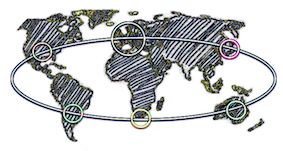
Below you can find instruction on keeping records. It is an extract of an email send by the Research Executive Agency (REA) to remind to all beneficiaries the best practises for record keeping.
INTRODUCTION
Along the lifetime of the project, MSCA RISE BENEFICIARIES must keep appropriate and sufficient evidence to support the unit costs declared. According to Article 22 of the H2020 Grant Agreement (GA), the Agency or the Commission may — during the implementation of the action or afterwards[1] — carry out audits on the proper implementation of the action and compliance with the obligations under the Agreement.
Beneficiaries are informed via a Letter of Announcement which includes an Annex with a list of supporting documents that beneficiaries shall make available to the auditors.
An audit will focus on events triggering the reimbursements of the unit costs and the control of eligibility conditions of work and promotion of the action. The auditors will work in line with the Indicative Audit Programme (see pages 109 to 120 for RISE) and the conditions of the GA. The current document is only a guide pointing out some best practices and peculiarities for MSCA RISE.
The burden of proof in case of audit is on beneficiaries. Beneficiaries are responsible for making available the supporting documentation not only for their seconded staff members sent on secondment but also for those of the hosted third country staff members, i.e. for those secondments the beneficiary has claimed the unit costs. Therefore, beneficiaries should gather adequate records to prove the number of units declared for both outgoing staff members and incoming staff members from the third country organization regardless of any different provisions foreseen in their partnership agreement.
Here are some BEST PRACTISES that MSCA RISE BENEFICIARIES should consider in their record keeping practice in order to prove the fulfilment of the secondments with the grant agreement obligations. Note that this may imply that the seconded researcher should keep some records while on secondment to bring back to the sending beneficiary, or – in the case, the beneficiary hosts a researcher for Third country partner – bring records proving eligibility concerning status as staff member at sending partner, etc.
1. PRESENCE OF THE STAFF MEMBER AT THE HOSTING ORGANISATION
Triggering event of the secondment of the staff member
The beneficiary keeps records demonstrating the presence of the staff member in the secondment premises institution for the duration of the secondment (e.g. lab books, timesheets, library records, canteen card, university badge).
2. THE DURATION OF THE SECONDMENTS IS CLEAR AND UNEQUIVOCAL
The person-months declared in the researcher’s declaration (start and end date of the secondment) are consistent with the supporting documents (e.g. travel tickets, accommodation documents, etc…) allowing the auditors to establish the exact duration of the secondments. The beneficiary keeps records with the names of the secondees and the period they have been seconded. Travel time is usually considered part of the secondment. In case of return to a different location other than the sending organisation (e.g. holidays), the end date of the secondment shall be the last day of work at the hosting organisation.
3. TYPE OF RELATIONSHIP OF THE SECONDED STAFF MEMBER AND THE INSTITUTION
Formal link between the staff member and the sending organisation
The beneficiary keeps records proving that the person sent in secondment (or the person hosted from a Third country institution) is staff of the institution or can be considered staff according to their national law (e.g. working agreement, enrolment in a doctoral programme, etc.) for at least one month (6 months for 2014-2017 GAs) prior to the starting date of the secondment.
This link implies that the sending organisation enjoys the necessary legal means in terms of control to allow the seconded staff member to work full-time on the R&I activities of the RISE action and to follow its instructions
4. THE STAFF MEMBER WORKS FULL TIME ON THE PROJECT
The beneficiary shows the full time involvement of the staff member seconded in the research and innovation activities carried out during the secondment period. (e.g. correspondence, e-mails, list of events to which the researcher participated, laboratory registers, logbooks, lab books, scientific articles, library records, time-sheets, reports to supervisors and all kind of documents which could proof the work done by the seconded staff). The beneficiary follows internal guidelines/procedures for time recording and work output.
5. TOP-UP ALLOWANCE (category A) IS FULLY USED FOR THE STAFF MEMBER
It covers the travel, accommodation and subsistence costs
The beneficiary keeps a proof (accounting books, bank statements, signed declaration, etc.) showing the amount paid to the seconded staff member and/or keeps record of the expenses incurred to cover travel, accommodation and subsistence costs for the benefit of the seconded staff member according to usual accounting practices of the beneficiary for a total amount of at least 2000 EUR (For WP 2018-2020 it is 2100 EUR).
[1] Audits may be started up to two years after the payment of the balance

Leave a Reply